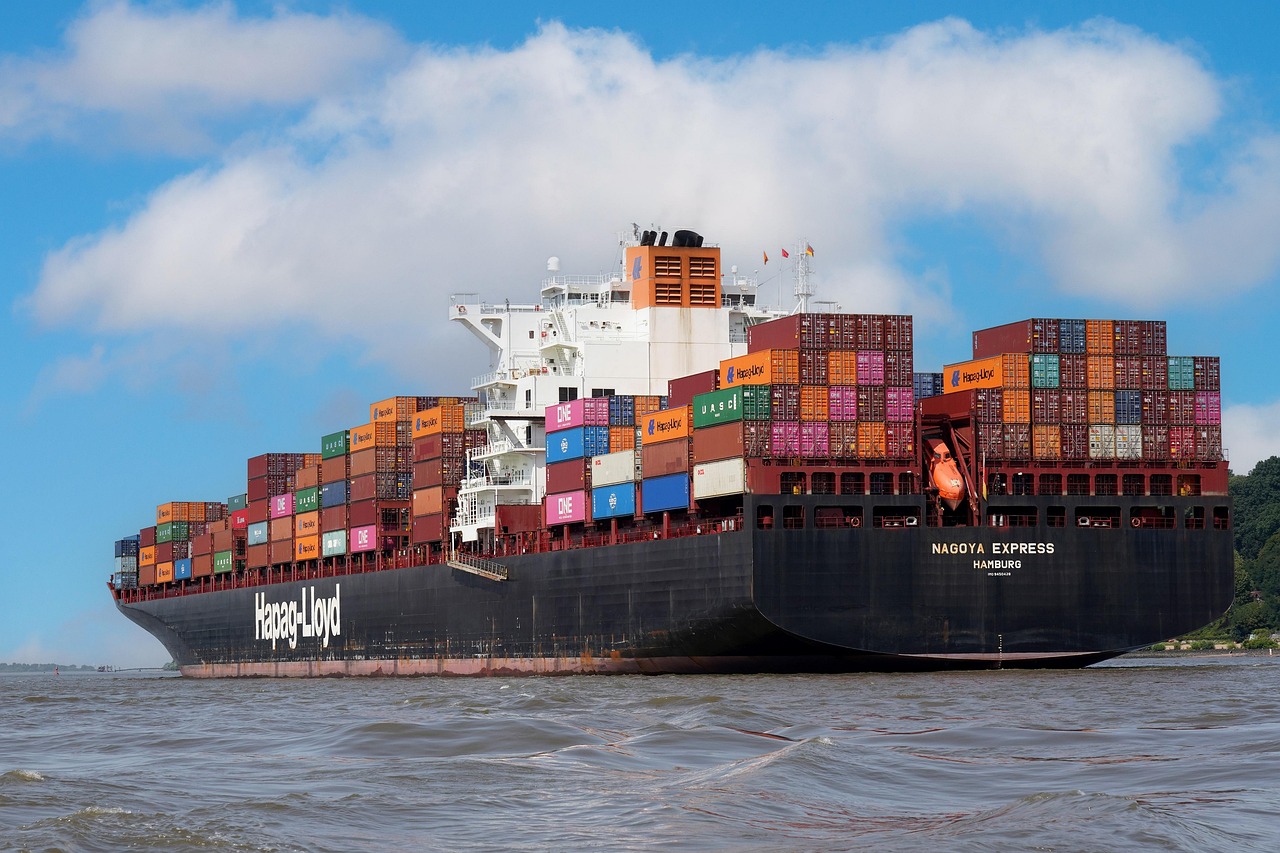In the dynamic and competitive business landscape of 2025, bottlenecks remain one of the most insidious obstacles silently hampering growth and efficiency. These unseen chokepoints can manifest anywhere—within outdated systems, overloaded personnel, or convoluted workflows—and choke the potential of even the most robust organizations. Rather than sudden, glaring failures, bottlenecks slowly erode profit margins, strain employee morale, and obstruct scalability, often remaining invisible until their consequences erupt as missed deadlines or spiraling costs. Recognizing these barriers early is paramount for businesses aiming to maintain agility and competitive advantage in an era where speed and adaptability define success. From the legacy ERP struggles in financial services to manufacturing slowdowns reminiscent of Tesla’s Model 3 rollout challenges, it is clear that bottlenecks have tangible impacts—and solutions must be equally strategic and technologically savvy.
Current industry leaders increasingly lean on methodologies from Toyota’s Lean Six Sigma principles and Kaizen Institute philosophies to confront these process inefficiencies head-on. Tools such as Microsoft Power BI are employed to extract actionable insights from complex data sets, while collaborative platforms like Asana, Trello, Monday.com, and Smartsheet enable smoother project management that circumvents common workflow blockages. IBM and Oracle provide advanced automation and AI-powered solutions designed to streamline operations and reduce human error. Moreover, guided digital adoption platforms, like Whatfix, empower employees with real-time assistance and analytics, enabling companies to preempt bottlenecks rather than merely reacting to them.
Addressing bottlenecks effectively requires a multi-dimensional approach: identifying where bottlenecks occur, understanding their causes, and implementing not just quick fixes but sustainable, continuous improvements. This article explores comprehensive strategies grounded in a blend of data analytics, workflow visualization, and proven automation technologies—critical tools in the modern business leader’s arsenal—to identify and eliminate bottlenecks that stifle growth and efficiency.
How to Identify Bottlenecks in Business Processes with Data-Driven Insights
Understanding precisely where bottlenecks reside within your business operations is the crucial first step toward eliminating them. Bottlenecks fundamentally occur when work demand surpasses the capacity of a specific resource, causing sequential delays and inefficiencies. Identifying these requires a systematic and data-driven approach, as intuitive observations alone often fail to uncover all critical chokepoints.
Visualize and Map Workflows for Clarity
One of the most effective ways to spot bottlenecks is by mapping your existing workflows using tools like Trello and Monday.com, which support Kanban-style boards and flowcharts. This organizational transparency highlights redundant steps, unclear handoffs, and overloaded tasks that stall productivity.
- Use flowcharts and process maps to visualize each stage of a business process.
- Apply value-stream mapping to track work progress, exposing steps where work piles up.
- Facilitate cross-department collaboration to ensure no step’s bottlenecks are overlooked.
For example, a retailer may discover that sales orders are delayed because inventory approvals sit on a single person’s desk, causing unnecessary wait times. Mapping this workflow offers a clear visual cause-effect link, which aids in streamlining.
Leverage Microsoft Power BI and Real-Time Analytics
Data analytics platforms like Microsoft Power BI can transform raw operational data into actionable insights. By monitoring key performance indicators (KPIs) such as cycle time, throughput, and work-in-progress (WIP) levels, business leaders gain solid evidence pinpointing bottleneck sources.
- Track cycle time to identify stages where processes exceed typical durations.
- Analyze throughput rates to measure how much work completes over time.
- Monitor WIP to detect task overloads and workload imbalances.
- Use trend analysis to anticipate emerging bottlenecks before they escalate.
IBM has pioneered AI-enhanced analytics that automatically gauge operational efficiency and report anomalies, exactly identifying problematic segments in complex workflows.
Gather Frontline Employee Feedback
Employees directly engaged with daily workflows often detect sluggish points before managers. Conducting surveys, interviews, and regular stand-ups encourages sharing of frequently overlooked inefficiencies. Implementing digital adoption platforms like Whatfix allows employees to provide instant feedback, while also guiding them through optimized processes seamlessly.
Root Cause Analysis and Workflow Diagnosis Techniques
To avoid treating symptoms rather than causes, use tools such as fishbone diagrams or the “Five Whys” analysis to dissect why bottlenecks form. This structured problem-solving uncovers systemic issues like poor resource allocation or unclear roles, enabling targeted improvements.
| Method | Description | Benefits |
|---|---|---|
| Flowchart Mapping | Visualization of process steps | Identifies redundant and delayed stages |
| Microsoft Power BI Analytics | Data visualization and KPI tracking | Quantifies bottleneck impact and trends |
| Fishbone Diagram | Root cause problem analysis | Facilitates deep issue identification |
| Employee Feedback | Insights from frontline teams | Uncovers hidden inefficiencies |

Common Causes of Bottlenecks and How Companies Like Toyota and IBM Address Them
Bottlenecks frequently emerge from outdated systems, inefficient workflows, and misallocated resources. Recognizing these root triggers is essential before attempting costly or complex fixes.
- Outdated Legacy Systems: Technology platforms that fail to scale under rising demand cause delays. For instance, Oracle and IBM often recommend migrating to cloud-based, modular systems to increase resilience.
- Manual Processes: Tasks reliant on human input tend to be slower and error-prone. Transitioning to robotic process automation (RPA) can reduce these inefficiencies.
- Inefficient Workflows: Over-complicated approval structures and unnecessary steps inflate process times.
- Overloaded Personnel: When key decision-makers or employees are stretched thin, approvals and task completions stall.
- Communication Silos: Fragmented information flow causes duplicated work and missed handoffs.
- Ambiguous Roles and Responsibilities: Lack of clear accountability delays decisions and sows confusion.
Toyota’s adoption of Lean Six Sigma and the Kaizen Institute’s continuous improvement methods exemplifies how systematic identification and elimination of waste and chokepoints drive operational excellence. For example, Toyota’s use of the “Andon cord” empowers any team member to halt production at a defect detection, preventing bottlenecks downstream. Similarly, IBM applies AI-driven workload monitoring to redistribute tasks before bottlenecks form.
| Cause | Example | Solution |
|---|---|---|
| Legacy Systems | 20-year-old ERP crashes under load | Cloud migration with scalable platforms |
| Manual Processing | Insurance claims delayed by manual entry | AI-driven RPA for automation |
| Inefficient Approvals | Five-step shipping approvals | Workflow automation and threshold approvals |
| Overextended Teams | Single approver causing delays | Role delegation and AI-enabled workflows |
Businesses looking to optimize sales processes can find practical advice at this resource, which aligns well with strategies to remove bottlenecks in customer journey stages.

Effective Strategies to Eliminate Bottlenecks Using Automation and Collaborative Tools
Removing bottlenecks is no longer simply about patchwork or incremental fixes. With advances in AI, analytics, and collaborative platforms, companies can proactively streamline operations to prevent bottlenecks from arising.
Deploy Workflow Automation and AI-Driven Guidance
Modern tools such as Asana, Smartsheet, and Monday.com enable automation of routine tasks, approvals, and notifications that traditionally cause delays. Whatfix’s digital adoption platform enhances this by delivering in-app guidance that ensures employees perform tasks accurately without stumbling over inefficient steps.
- Automate repetitive approvals and routing to eliminate manual delays.
- Use AI chatbots to handle routine IT or HR requests, freeing staff for complex work.
- Integrate predictive analytics to dynamically allocate workloads and prevent overburdening.
Enhance Cross-Team Communication and Transparency
Bottlenecks often arise when teams or departments operate in silos with limited visibility into workflows and resource availability. Tools like Trello and Asana foster transparency by centralizing task tracking, while Microsoft Power BI dashboards provide real-time insights into process health.
Continuous Improvement with Kaizen and Lean Assessments
Using the philosophies championed by the Kaizen Institute, organizations can establish routines for regular process evaluation and incremental improvements. Encouraging employee participation in these cycles nurtures ownership and responsiveness to emerging bottlenecks.
| Strategy | Implementation | Expected Outcome |
|---|---|---|
| Workflow Automation | Use Monday.com for approval routing automation | Reduced delays and error rates |
| Real-Time Analytics | Deploy Microsoft Power BI dashboards | Proactive bottleneck identification |
| Digital Adoption Platform | Implement Whatfix for employee guidance | Faster user adoption, fewer errors |
| Cross-Functional Collaboration | Use Trello boards for project transparency | Improved communication, less siloing |
For deeper insights into efficient business operations that can help circumvent workflow bottlenecks, visit this detailed guide.
How to Sustain Bottleneck Elimination with Continuous Monitoring and Team Empowerment
Eliminating a bottleneck is only the beginning; sustaining operational fluidity requires ongoing vigilance and adaptability. Businesses must implement systems and cultures that not only detect emerging bottlenecks but also empower teams to resolve them swiftly.
Implement Real-Time Monitoring and Analytics Platforms
Real-time dashboards powered by Microsoft Power BI or IBM’s AI tools enable managers to monitor KPIs continuously, receiving alerts when process deviations indicate new bottlenecks. This foresight allows preemptive action before consequences intensify.
- Set thresholds and automated alerts for cycle times and throughput.
- Conduct regular workflow audits using analytics insights.
- Utilize predictive modeling to forecast demand surges and resource needs.
Promote Employee Autonomy and Cross-Training
Overdependence on select individuals risks recurring bottlenecks. Encouraging cross-training and empowering teams to make decisions within clear frameworks distribute workload evenly and reduce approval delays. Platforms like Whatfix Mirror offer interactive training tools that improve employee competence on key processes quickly.
Adopt a Culture of Continuous Improvement Inspired by Lean Six Sigma & Kaizen
Embedding methodologies from Lean Six Sigma and the Kaizen Institute sustains bottleneck elimination by making process refinement a permanent organizational value. Regular retrospectives and process improvement sprints keep workflows aligned with evolving business needs.
| Practice | Tools & Methods | Benefits |
|---|---|---|
| Continuous Monitoring | Microsoft Power BI, IBM AI Analytics | Early detection of process slowdowns |
| Cross-Training | Whatfix Mirror, Training Programs | Improved flexibility and task coverage |
| Lean & Kaizen Principles | Regular Kaizen workshops and Six Sigma tools | Ongoing operational excellence |
Understanding how to scale your teams efficiently without bottlenecking growth is vital – more resources are available at this informative link exploring the metrics to monitor when expanding teams.
Proactive Measures and Quick Tips to Manage Active Bottlenecks in Your Business
When bottlenecks actively disrupt operations, swift action is crucial to minimize cascading effects on productivity and revenue.
- Detect early: Leverage real-time dashboards and automated alerts to recognize bottlenecks as they emerge.
- Balance workloads: Redistribute work using capacity planning tools to avoid overburdening any resource.
- Set WIP limits: Limit concurrent tasks to manageable levels, following Kanban principles, to prevent task congestion.
- Batch processing: Group similar tasks to reduce switching costs and improve flow.
- Scale resources: When necessary, supplement teams or upgrade infrastructure to handle peaks.
Incorporating these strategies aligns with best practices recommended by industry leaders and complements software solutions like Asana and Smartsheet, which facilitate workload visualization and task batch processing. For guidance on managing supply chain bottlenecks specific to small businesses, visit this article for tailored advice.
| Tip | Description | Tools/Techniques |
|---|---|---|
| Early Detection | Find bottlenecks before impact grows | Real-time dashboards, automated alerts |
| Workload Balance | Prevent resource overloads | Capacity planning, AI workload distribution |
| WIP Limits | Maintain manageable task levels | Kanban boards, WIP limit settings |
| Batch Processing | Group tasks to minimize delays | Task grouping, scheduled work blocks |
| Scaling Resources | Expand capacity to meet demand | Hiring, outsourcing, cloud scaling |
Frequently Asked Questions About Identifying and Eliminating Bottlenecks in Business
- Q: How can I tell if a bottleneck is short-term or long-term?
A: Short-term bottlenecks are temporary and usually resolve with minor adjustments, such as a delayed shipment. Long-term bottlenecks stem from systemic inefficiencies like outdated systems and require strategic fixes like process redesign or technology upgrades.
- Q: What role does automation play in fixing bottlenecks?
A: Automation reduces manual interventions, accelerating workflows and minimizing errors. By automating repetitive tasks and routing approvals efficiently, businesses can eliminate many common bottlenecks.
- Q: Can bottlenecks in small teams be as damaging as in large organizations?
A: Absolutely. In small teams, bottlenecks can have amplified effects because each resource carries more responsibility. Recognizing and fixing bottlenecks early is essential regardless of business size.
- Q: How often should I review processes to prevent bottlenecks?
A: Regular, scheduled reviews—quarterly or more frequently depending on business complexity—are recommended. Using continuous improvement methods like Lean and Kaizen helps keep workflows optimized.
- Q: What technologies are best suited for ongoing bottleneck monitoring?
A: Platforms like Microsoft Power BI, IBM AI Analytics, and Whatfix provide real-time tracking, predictive analytics, and user guidance, making them powerful allies in sustained bottleneck management.


